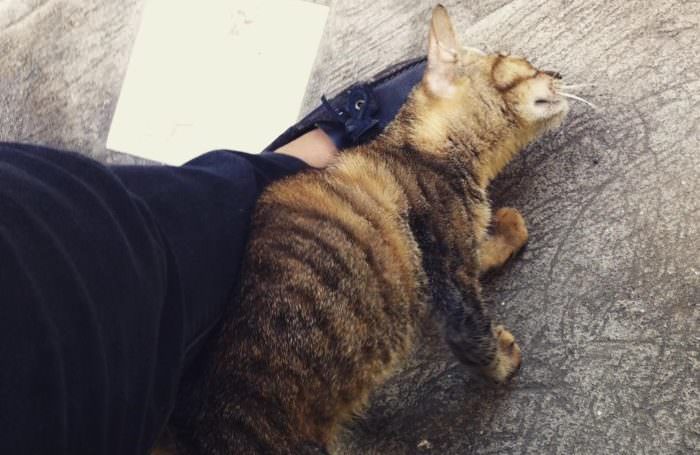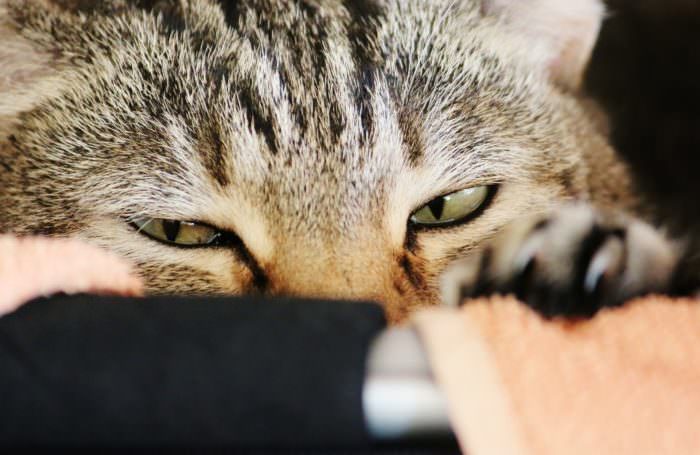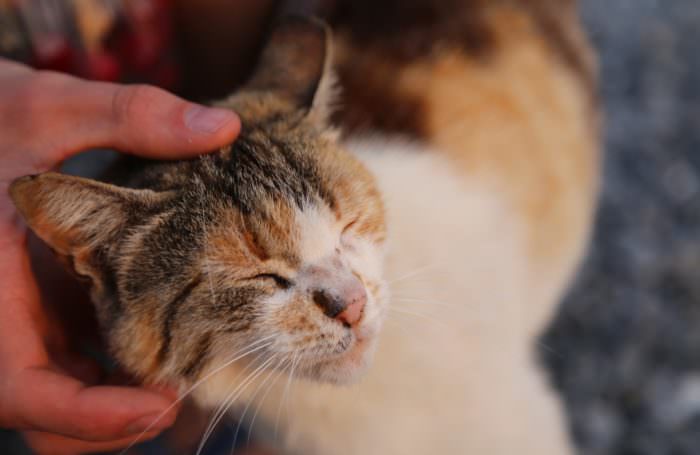When dog people argue the benefits of having a canine instead of a feline, certain points inevitably come up in the conversation:
“Dogs are so loving and expressive”
“Cats are too independent and standoffish”
“You can never tell what a cat is thinking”…and so on.
It turns out these arguments aren’t as effective as pup parents may think. Animal behaviorists believe that cats are just as communicative with their humans as dogs – we simply don’t know how to interpret their subtle language.
This is due, in part, to the fact that there has been far less research conducted on cat behavior compared to our canine companions. Another reason is that dogs tend to mimic the facial and body expressions of the people they bond to, making it easier for us to recognize their emotional state.
Cats are a bit more aloof and enigmatic. Even when they do express affection, we may overlook their understated cues. Instead of leaping into your lap and smothering you with kisses when you arrive home from work, a kitty may brush against you and curl his tail around your leg. This is the cat equivalent of a hug according to Sharon Crowell-Davis, a professor of veterinary behavior at the University of Georgia.
She explained this theory to nymag.com:
When cats are coming back from hunting, what we commonly see in the feral situation is they may spend several minutes rubbing up and down, up and down, against each other. They’ll also wrap their tails over each other’s backs — it’s like a human hug.
When it comes to facial expressions, many people believe cats are closed books. In reality, they have a wide range of subtle variations that can be easily missed if you don’t know what to look for. Crowell-Davis says it’s all in the muscles. A stressed cat’s facial muscles are tensed – the ears lay flat, the lips pull back. A content cat’s face is relaxed and supple.
Veterinarian and author of How to Speak Cat: A Guide to Decoding Cat Language, Gary Weitzman says to watch for the “long, slow blink” – the surest sign of acceptance a cat can give. When the stress hormone cortisol is at its lowest levels and a cat is absolutely comfortable with a human or other cat, the long, slow blink is an autonomic response showing their contentment and relaxation.
As for vocal communication, Bradshaw has a surprise for cat lovers – those meows are meant for you, not the other cats. In fact, feral cats hardly meow at all. Domesticated cats, on the other hand, are quite the little chatterboxes! Many cat owners can even tell you the meaning of each meow, from “I’m hungry” to “There’s a fly in the house”.
Bradshaw says:
People think of it as an absolutely classic cat behavior … but it’s something they’ve learned to do to get our attention. It’s really something they’ve adopted as a way of communicating with humans.
Even those soft, gentle purrs can be full of meaning. The average human would report that a purring cat is a happy cat, but it’s a bit more nuanced than that. Cats also tend to purr when they are injured or sick. Veterinarians and behaviorists think it is their way of requesting care and attention. During times of stress, it’s the only way our cats know to tell us “Please don’t go. I need you.”
So the next time your favorite dog person questions your relationship with your cat, tell them it is just as communicative as any human-dog pairing. It’s just a little more complicated and unique – like cats themselves!
H/T to nymag.com







